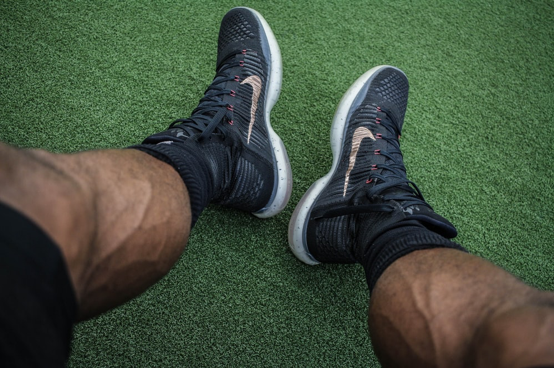What are the most common vascular problems? The arteries and veins help transfer blood throughout the body. When this function does not properly work due to an underlying condition, you develop the vascular disease. It is essential to immediately visit a vascular surgeon. They will diagnose your condition and provide treatment.
You can develop vascular diseases in any part of the body. Common vascular diseases include:
- Abdominal aortic aneurysm,
- Peripheral artery disease,
- Stroke,
- Carotid artery disease,
- Pulmonary embolism,
- Chronic venous insufficiency,
- Deep vein thrombosis,
- Varicose vein.

(Source)
Vascular Disease Types
Below, you will find some common vascular problems and how it affects your body:
1. Aneurysm
You may develop a bulge in the wall of a blood vessel. Professionals refer to this budge as an aneurysm. Most bulges appear on the aorta. Aorta is the main blood vessel that stretches down the abdomen leaving from the heart. An aortic aneurysm appears in your chest or belly.
When it appears on your chest, you refer to it as a thoracic aortic aneurysm. And when you develop it in your belly, it is an abdominal aortic aneurysm. You can also develop smaller aneurysms. Even though they might not develop any symptoms, they might lead to various problems:
- Aneurysms can cause a blood clot that can travel through the body. It can block blood flow to vital parts of the body.
- The development of plaque on the aneurysm can cause severe problems.
- With the growth of an aneurysm, your pain increases as it presses with other organs.
- The wall of the artery can burst with the stretch due to the condition. The rupture of the aneurysm can be life-threatening.
2. Peripheral Artery Disease
Your heart muscles receive blood from coronary arteries. But, other parts of your body receive blood from peripheral arteries. When cholesterol, fat, and other substances build up inside the inner lining of the veins’ wall, it can develop plaque. On the other hand, when plaque grows, it narrows down the vessel, blocking your blood flow.
In worse cases, the plaque may also rupture your arteries. When the tissues do not receive enough blood, the arteries also narrow down. Symptoms of this condition depend on the location of the condition. Here are some symptoms of peripheral artery disease:
- You can suffer from a heart attack or chest pain due to a blockage in your coronary arteries.
- When this condition occurs in your kidney, you are at risk of heart failure and high blood pressure.
- You can have leg cramps and pain when it occurs in your legs. You will develop ulcers, sores and will always feel tired.
- Blockage in your carotid arteries can block the supply of blood to the brain and lead to stroke.
This condition blocks the flow of blood this can decrease the supply of blood to different body parts. The severity of the condition may lead to the loss of an organ or limb.

(Source)
3. Blood Clots in Veins
You can develop deep vein thrombosis when there is a blot clot in your veins. The common position for a blood clot in the thigh, lower legs, and pelvis. A blood clot in the veins can be fatal. When the blood clot breaks inside your vein and travels through the body, it can block organs such as the lungs. Due to the blockage, your organs will not receive enough blood. This lack of blood can become a pulmonary embolism, which is a life-threatening condition. Here are some causes of blood clots in your veins:
- Long bed rests
- Genetic disorders
- Slow blood flow
- Thickness of blood
- Damaged valves
- Hormonal change
- Surgery
4. Varicose Veins
Veins contain valves on the innermost wall. Due to the movement, these valves transfer the blood upwards by opening and closing. This constant movement of the valves leads to one-directional flow. The valves lose their ability to close due to various reasons, including pregnancy or obesity. Due to this inability to move the blood upwards, you develop varicose veins.
The most common location to develop varicose veins is thighs, calves, knees, and hands. You can also refer to this condition as spider veins. You can recognize a varicose vein as it becomes more visible above the skin. Varicose veins can sometimes become painful and may also burst and bleed. Furthermore, varicose veins can lead to a blood clot and other serious conditions if left untreated.
Common Vascular Problems: Conclusion
The vascular system is the highway of your body and circulates blood throughout the body. It includes veins, arteries, and capillaries. Arteries transfer the oxygen-rich blood to different organs of the body, whereas veins circulate the impure blood to the heart for purification. Because veins carry blood against the gravity from the toes to the heart, it requires more pressure.
However, when the blood circulation does not work as expected, you may develop vascular problems. Some vascular conditions can be painful, and some can be life-threatening. Therefore, it is essential to consult a professional doctor for diagnosis and treatment of your condition.
If you are looking for a certified doctor to treat your vascular condition, you can visit our clinic, the Vascular Surgery and Vein Center. Make an appointment with Dr. Norman Chideckel by contacting us at 212-993-6133.


